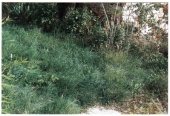Well here is an idea I used (not necessarily confined to a small space but it certainly could be) Cardboard boxes. And I'm not talking about simply laying cardboard out flat to start the lasagna style bed. But quite literally planting in a cardboard box filled with
compost. I know some here have a pretty dim view about using paper and cardboard in the garden but I personally think it is a good way to get started in many situations.
Here is my story and how/why I did it. I bought my house and moved in Feb 2007. Incredibly sandy soil yet some tenatious weeds. I did not yet know much about permaculture though I was already a complete compost whacko. Anyway, I just moved to the new house and wanted to very quickly get some veggies growing. I hate the backbreaking labor of digging and weeding. I am also on a rather tight budget and refuse to buy bagged dirt.
Luckily, Our county lets residents take free compost (perhaps not great compost but I'd just moved in, my compost was barley started and being kinda lazy, I do the two year compost.) So, to get the garden started quickly, I simply dropped heavy duty produce boxes on the ground and dumped free compost into them. Hooked up some drip irrigation and planted seeds. I managed to grow my first warm season veggies this way at the new house. Squash, zucchini, cucumbers, pumpkins, and even some corn.
This made for an almost instant raised bed at almost no cost.
Some modifications I would make to this plan if I did it this way again...
1- lay down flat cardboard under everything and extend out from the boxes on all sides and place mulch over the cardboard. This will make for nice mulched pathways and help keep the aggressive weeds down as they are tricky to pull when they grow up through the corrugations in the boxes!
2-avoid corn the first year of a lasagna bed, it tends to be stunted if the roots can't easily get down to the mineral soil.
After a season or two, the cardboard breaks down and becomes mulch around slightly mounded beds. Keep adding compost and organic matter each year and the soil keeps getting better.
This was the quickest/cheapest way to start small that I know of and it did work.

































 I'll be raking leaves again this fall.
I'll be raking leaves again this fall.







